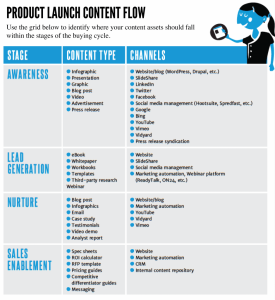The best thing I can say about Halo: Infinite is that it gets better as it goes. The single-player campaign starts out as a basic first-person shooter dripping in nostalgia juice, and it ends up as a rudimentary open-world shooter swimming in sci-fi tropes, starring everyone’s favorite emotionless space soldier and his co-dependent AI assistant.
As the first open-world entry in the Halo franchise and with more than a year of extra development time, I had high hopes for Infinite. Maybe too high. And even with a grapple hook, this game just can’t reach them.
I say all of this with love in my heart. I’ve been a Halo fan since Combat Evolved, and I have two decades of happy memories associated with the franchise, most of which I’ve re-lived while playing Infinite. That part has been a treat — there’s nothing like turning the corner in a random metal-lined corridor, or driving a Warthog down a narrow mountain path, and feeling that warm, gleeful sense of familiarity. This happens over and over again in Infinite.
Revamping old environments is the easy part, though. Halo Infinite is the first open-world entry in the franchise’s history, promising more exploration and spontaneity for Master Chief than ever before. However, in practice, the world of Zeta Halo is contained and largely linear, offering few surprises and little incentive to travel off the beaten path. There are bases to capture and hordes to defeat, but with such a cramped map, these sidequests pop up naturally along the path of the main storyline, and the game automatically switches the objective to whatever mission is nearby. Sidequests are folded into the campaign like this, and they become indistinguishable from the main missions.
By the time I felt ready to get out and explore the Ring, I realized I’d already hit all the icons on my map.
That said, Infinite introduces new mechanics and tools that are really fun to play with, and the best of these gadgets is the grapple hook. There are no invisible walls in Infinite, and the grapple hook allows players to take advantage of Zeta Halo’s vertical space, scaling mountains and buildings in a series of pops and swings. The grapple hook opens up fresh vantage points for every battle, and it saved my Master Chief from falling to his death many times over. (I may have even sang, “Spider-Chief, Spider-Chief…” under my breath every now and then. Maybe.)
Playing with an Xbox controller, the grapple hook lives on the D-pad, alongside three other tools that get added to Chief’s arsenal as the game progresses: a shield, radar darts and a dash move that I rarely use. I’ve tried to deploy the dash, but I really don’t see the point when the grapple hook does the same thing, but faster and in more directions.
Switching among these options on the D-pad takes some practice, but once that becomes second-nature, the hook, shield and radar make each fight more dynamic than Halo’s ever been. The grapple hook allows Master Chief to pick up objects from afar like guns and throwable explosives, it eventually shocks enemies on contact, and it lets players smoothly take over enemy vehicles. Infinite is at its best when it provides a rich environment for grappling, shielding and landing floaty in-air headshots, with enemies attacking from all sides.
Now I’m going to talk some shit about the grapple hook. I know, I just sang its praises, and I stand by everything I said, but I have to put it all in context. From my perspective, the most obvious innovation in Halo Infinite is its use of vertical space, aided by the grapple hook — but that’s hardly a new idea at all, and frankly, other games have done it better.
To name just a few recent examples: The Legend of Zelda: Breath of the Wild made headlines in 2017 for rethinking vertical exploration in an open-world space; last year, Doom Eternal beautifully demonstrated the power of parkour mechanics in an FPS environment; and Insomniac’s Spider-Man series has perfected the art of high-swinging action. In comparison to games like these, Infinite’s mechanics aren’t innovative at all.
I bring this up because I think it’s a disservice to compare Halo Infinite only to other Halo games, rather than its competitors. After all, competition is the root of evolution — and that’s kind of Halo’s jam. I expected more from a pioneer of the FPS genre as it ventured into open-world gaming. Just because it’s new for Halo doesn’t mean it’s new for the industry.
Even with the fresh toys and larger world, Infinite plays like a classic Halo game. The levels are repetitive and mazelike, and the story is packed with military stereotypes, sarcastic robots, women in skin-tight bodysuits and cheesy dialogue. There are a handful of cool new weapons, like the reticle-shifting Heatwave and the revolver-like Mangler, and the entire map is generously stocked with loose ammo and guns. It’s a blockbuster action movie in interactive form, and it has high-energy, entertaining moments, but these are largely overshadowed by the simplistic grind of it all.
Overall, Halo Infinite lacks surprise and intrigue, from the map to individual fights. Failing a boss battle, for instance, rarely feels like a failure of strategy. These encounters generally take place in simple settings with repetitive attacks, and I don’t feel like I’m learning anything new with each runthrough; I’m just going through the motions until I catch a lucky break and I can follow the yellow diamond to my next checkpoint. And then the next. And the next.
All of this should make for an incredibly fun multiplayer component, and so far, it seems like that’s the case. Maybe Infinite’s campaign is more engaging in split-screen co-op, historically my preferred way to play, but that mode won’t be available until next year. Neither will Forge mode, for that matter.
If Halo Infinite had launched day-one with the Xbox Series X and S, I likely wouldn’t have many complaints. The fact that 343 Industries and Microsoft took an extra year to build this game, hyping it up the whole way through, shifted my expectations a bit. Maybe too much.
Regardless, I’ll see you in the Halo: Infinite multiplayer lobby on December 8th.
(9)





